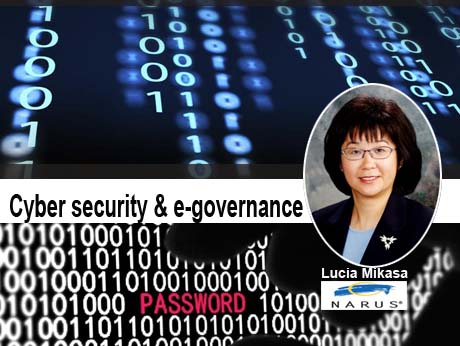
We bring you this interesting input on cyber security from Sunnyvale ( California, US)-based Narus Inc, leaders in real time traffic intelligence for the protection and management of large IP networks -- and a rare software company that provides security, intercept and traffic management solutions within a single, flexible system. Part of the Boeing group, Narus has an India operation based in Bangalore and numbers Reliance (India) among its customers.
Narus, recently compiled a top 10 list of the latest cyber threat trends that will likely pop up over the next few years. 1. Attacks via USB 2. Large-scale, targeted botnet attacks. 3. DDoS attacks 4. Increased attacks on and via social networks 5. Click jacking and cross-site scripting 6. Phishing attacks from “trusted” third parties 7. Online fraud and money mules 8. Cloud computing concerns 9. Data exfiltration and insider threats 10.Attacks on mobile devices and wireless networks
Lucia Mikasa, Senior Director, Marketing , Narus shares her thoughts on e-governance in India – and the need to build in security into e-gov solutions:
In the past six years, India grew its IT footprint tremendously, experiencing exponential growth in the area of business to business communications. Progress started to be made in translating the IT prowess into everyday life of the common man, particularly in rural areas. IT based service delivery started with successes such as e-Seva and Bhoomi. Citizens benefited by reducing the burden of having to physically visit separate agencies, saving time and costs of conducting business with the government.
In the next six to ten years, the e-Governance will continue to make advances in the use of computers in the government offices and connecting the various government organizations electronically with each other, sharing information and data. The government departments will continue to enrich their presence on the web with websites containing information about the organization, reports and contact details. Citizens will have more opportunity to interact with government organizations electronically by downloading forms, instructions, filing reports; etc.ICT will be used to enhance communications between government to government, government to citizens and government to business. Key factors proven to be major bottlenecks for these types of strategic and country wide initiatives include a coordinated plan, common vision and budget.
For e-Governance to be successful, it requires people, process and technology.
- People: On the people front, political leaders are needed to create the vision and plan for e-Governance, identify implementation teams and fund the projects. Citizens need to be made aware of electronic services available and be trained to use them.
- Processes need to be identified so the federal, state and local government teams can work together and support each other’s efforts and share best practices.
- Technology such as data centres, wide area networks, cloud computing, physical access points for delivery of services need to be identified and deployed. With increased attacks on networks by hackers, terrorists and enemy nation states, cyber security measures need to be planned in and implemented.
Government organizations in India are facing the same challenges faced by other industrial nations. With the wide adoption of computing and access to Internet to conduct business and access information, the pressure is on for the government of India to offer its services electronically. The benefits include lower operating costs, faster response time for the citizens and wider availability of information which is important in a democratic country.
The first and the most important issue of all this is the security issue. While the need to offer services electronically is expanding, increasingly government systems around the world, including India, are getting attacked by hackers either for financial gain or for political reasons. Governments need to design cyber security into their systems as they roll out new e-gov services. They need tools to monitor the behaviour of their networks in real-time and have the ability to mitigate any attacks quickly. The Narus Insight real-time traffic intelligence is used by countries around the world to protect and manage their networks against cyber threats.
Narus insight overview: http://www.narus.com/index.php/product/narusinsight-overview
July 26 2011